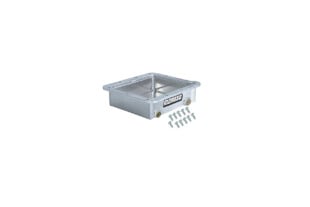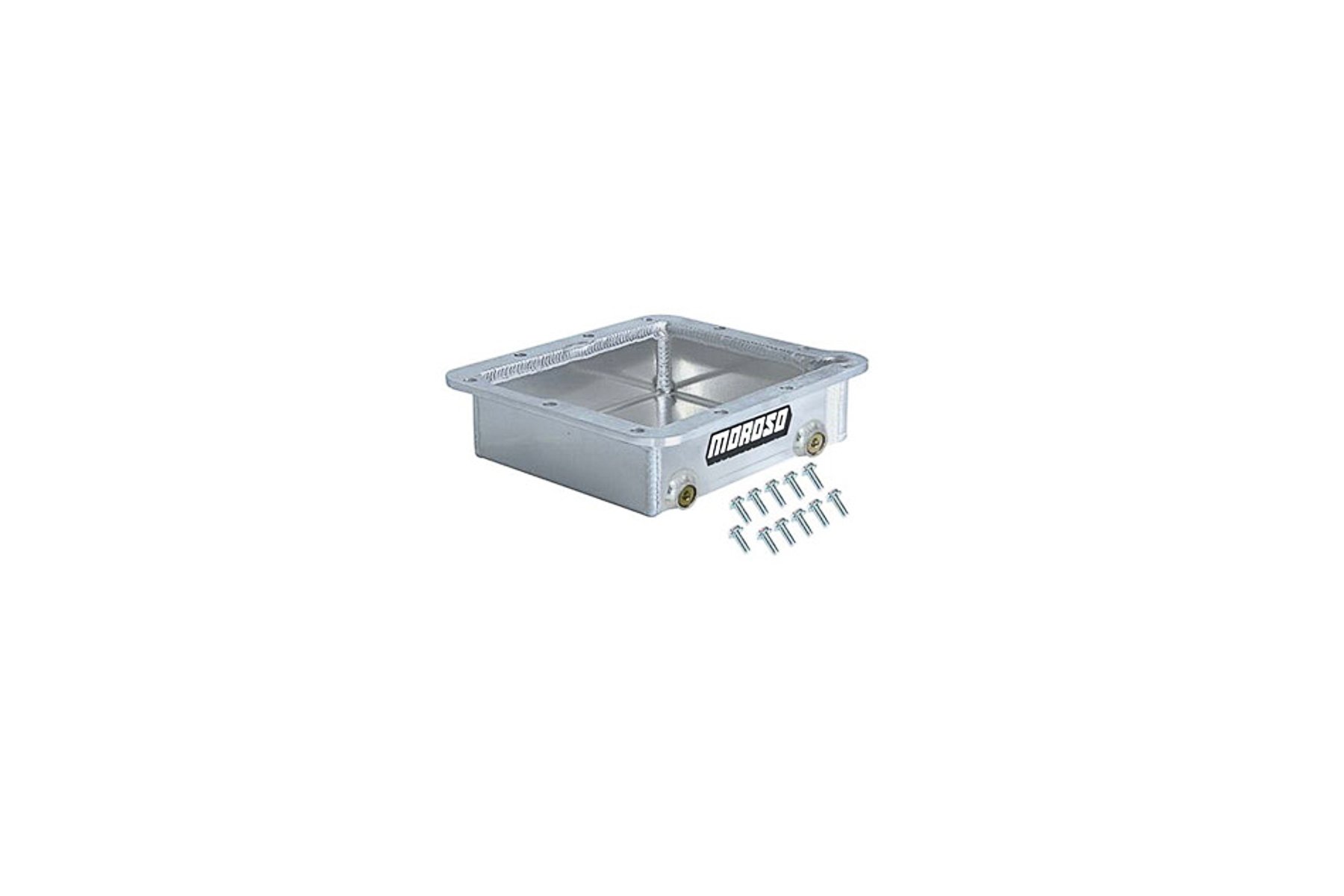
Speaking of debates, check out the ’15 Mustang GT vs ’15 EcoBoost here.
A recent discussion amongst a few fellow Mustang enthusiasts and myself provoked a rather interesting debate regarding the modular engine family. More specifically, the future of the 5.0-liter DOHC four-valve V8, aka the Coyote.
I’ve chosen the persuading side which debates the theory that based on the historical success of the 4.6-liter V8, Ford will continue to produce the 5.0-liter V8 in a number of assorted renditions for the next decade or possibly longer – while the antithetical side has proposed that Ford will soon phase-out the 5.0-liter for a more prominent and more advanced modular engine during that same period of time.
Let’s discuss a brief history and the renditions of the 4.6-liter V8 modular engine to better understand where I’m coming from.
Evaluating The First Modular Engine – The 4.6-Liter V8
The 4.6-liter V8 modular engine began production in 1991 and ended in 2014 for a total of 23 years. Over that 23 year period, many renditions of the engine were introduced into many Ford, Lincoln, and Mercury vehicles. The earliest version of this modular engine was the 4.6-liter SOHC two-valve V8 which debuted in the 1991 Lincoln Town Car. Although Ford incorporated the 4.6-liter two-valve V8 into many of its cars, trucks, and SUVs, the most widely known and popular interpretation within the Mustang world is the ’99-’04 Mustang GT engine, praised for its refinement and horsepower rating (260 horsepower and 302 lb-ft of torque at the crank).
Shortly after 1993, Ford derived sister-company Lincoln yet again paved the way for another first for modular engines - the 4.6-liter DOHC four-valve V8. Known as the 'InTech' in Lincoln vehicles, this engine grew to become extremely popular for having a dual-over-head-camshaft composition which included four valves per cylinder. These engines became even more popular when Ford introduced revised versions of them in the '96-'01 SVT Cobra and '03-'04 Mach 1, with perhaps the most legendary version being the supercharged iterations found in the '03-'04 SVT Cobra.
The final ‘generation’ of the 4.6-liter V8 modular engine debuted in 2004 when the 4.6-liter SOHC three-valve V8 was introduced in the 2004 Ford F-150. Since the 4.6-liter four-valve engines were more reserved for higher models, this 4.6-liter 3-valve V8 engine was more of a successor to the previous ‘generation’ 4.6-liter two-valve V8 found in the ’96-’04 Mustang GT. The 4.6-liter 3-valve integrated new technology into the 4.6-liter V8 modular engine family.

Apart from the obvious number of valves increased from the two-valve, the 4.6-liter three-valve incorporated new technology such as an electronically controlled charge motion control valve (CMCV), this valve system was designed to control the intake of air at lower speeds which intern improved low-end torque and helped to control emissions. The three-valve was also the first 4.6-liter engine to assimilate the use of variable camshaft timing (VCT) to improve low-to-mid range torque as well.
Gauging The 5.0-Liter DOHC 4-Valve V8
Now that we understand the highlights of the first modular engine series, let’s get right into it with the 5.0-liter DOHC four-valve V8 known as the Coyote. The 5.0-liter DOHC four-valve V8 first debuted in 2011 when it was introduced as the new engine platform for the 2011 Mustang GT. The Coyote has been the engine of choice for the Mustang since 2011, and for good reason.

Project Wild E Coyote in completely stock form before the fun began.
Just like the previous 4.6-liter V8 modular engine, the Coyote too shares its roots with other Ford platforms, including the Boss 302 Mustang, and a revised ‘torque-baited’ version in the ’11 and up F-150. One of the goals for the all-new Coyote V8 engine was to remain as close to the 4.6-liter V8 as possible (in terms of the manufacturing process) in order to ensure the new engine would remain a part of the modular engine family.
Ford was able to achieve that and more with the Coyote by incorporating an ample amount of new technology, including an intake manifold which would be mounted lower on the engine, an increased compression ratio, improved intake geometry through DOHC technology, and variable camshaft timing, known on the Coyote as the twin independent variable cam timing (Ti-VCT).
Where Do I Think The 5.0 Is Going?
So let’s get one thing out of the way first. We’re all well aware that Ford has commented in the past that the V8 isn’t going anywhere. With that said, I think it’s pretty clear that the Coyote 5.0-liter V8 has definitely matched the success of the previous 4.6-liter modular engine mil, cementing its place rightfully in the blue oval’s engine history. But what does this mean for the Coyote engine? Does this mean that Ford will continue to revise and develop the 5.0-liter V8 for the next decade, or possibly even longer?
Two of the most iconic S550 Mustangs currently use a development of the Coyote 5.0-liter V8 engine - both of which are fairly close to the original roots of the Coyote.
 Although the 5.2-liter V8 Voodoo engine is obviously the superior engine between the two, I believe Ford won’t phase-out the Coyote in favor of it. The Voodoo is more of a unique engine which is technically not mass produced like the Coyote. One of the reasons for that is because it’s likely more expensive to produce, whereas the Coyote is technically a member of the modular engine family and therefore enables it to be produced on a much larger scale at any given time.
Although the 5.2-liter V8 Voodoo engine is obviously the superior engine between the two, I believe Ford won’t phase-out the Coyote in favor of it. The Voodoo is more of a unique engine which is technically not mass produced like the Coyote. One of the reasons for that is because it’s likely more expensive to produce, whereas the Coyote is technically a member of the modular engine family and therefore enables it to be produced on a much larger scale at any given time.
I’ll even go as far as to say that because of the company’s EcoBoost technology and the cost of research and development and strict EPA regulations, Ford probably doesn’t have any plans in the next 3 to 5 years to produce a new modular V8, let alone a ‘halo engine’ for a new Mustang. It just makes sense from a financial standpoint to continue to improve the Coyote 5.0 for the next decade.
The point that I’m trying to make is that it wouldn’t surprise me if Ford decided to take the path of least-resistance by adopting the Coyote 5.0-liter V8 (or perhaps a partially revised or supercharged version of it like the ’03-’04 SVT Cobra engine) to develop the next badass Mustang for years to come. Whether that’s a Shelby GT500, a Mach 1, a Cobra R, or a completely new Mustang model.
Keep in mind that everything I’ve discussed is all up to interpretation. With that said, what do you think? Am I blowing smoke, or do you think I may be on to something?

















